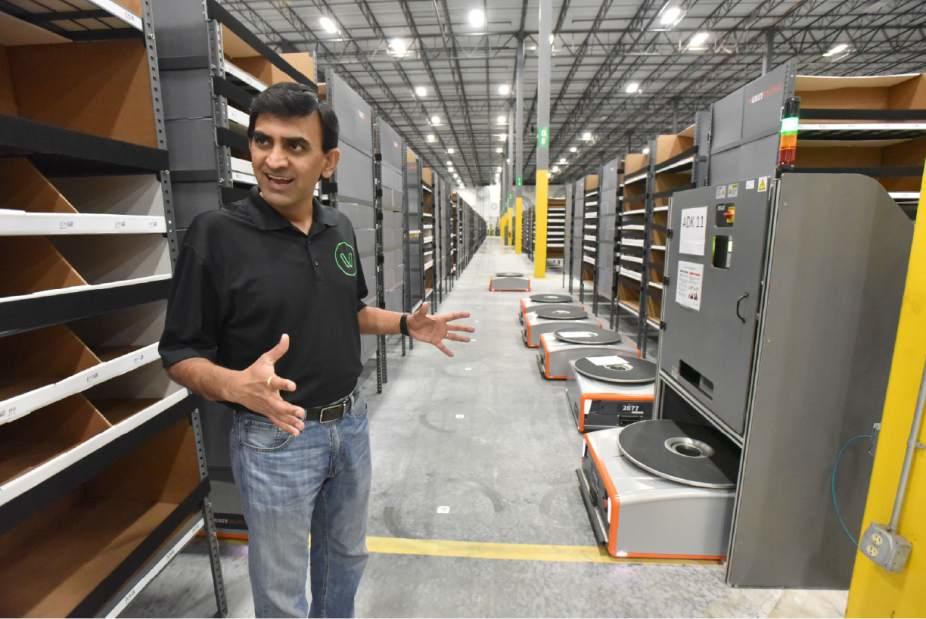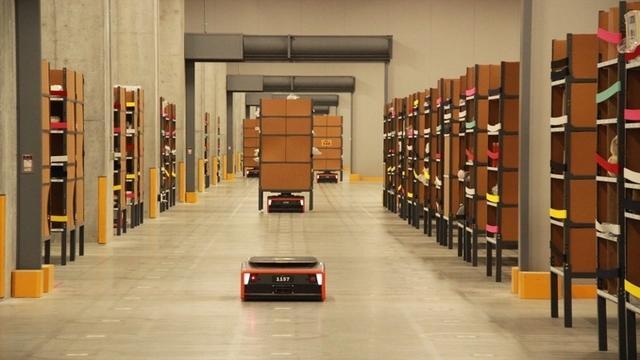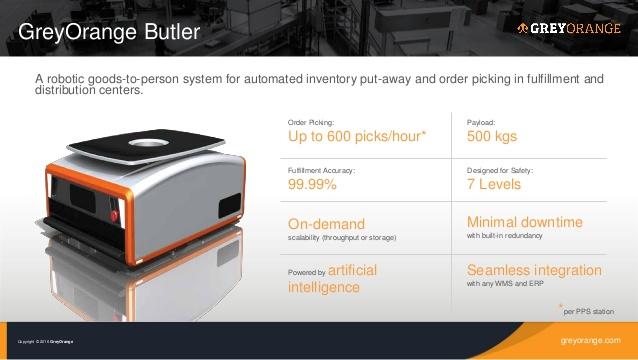The automation wave is expected to dramatically reshape the US economy in the 2020s. This disruption will impact the labor force and cause tremendous job losses. By 2030, automation could eliminate 20% to 25% of current jobs — equivalent to 40 million displaced workers, hitting the bottom 90% of Americans the hardest.
A new report from The Atlanta Journal-Constitution (AJC) shows how warehouse automation is starting to gain traction in Atlanta, the sixth largest warehousing space in the US.
The new, robot-powered warehouse in McDonough, Georgia, is currently undergoing pilot tests and will begin operations in June. Project Verte, a start-up trying to compete with Amazon, is responsible for automating the warehouse.
The Butler system, an advanced autonomous fleet of mobile robots, uses robotic goods-to-person technology for automated put-away, inventory storage, replenishment, and order picking.
AJC said the Bulter robots are like “giant Roombas” that move between 6,000 refrigerator-size shelving units lined up in rows 85 deep within the warehouse. An employee summons the robot with a handheld device, it then uses a jack to lift the shelving unit and transports it to the human picker, who then grabs items out of the bins, scans it and hands it off to the packaging department.
While there are no other fully automated warehouses in Georgia, the closest one is in Jacksonville, Florida, which uses similar Roomba-like robots.
In the next 10.5 years, automation is set to eliminate millions of jobs in the warehouse and logistics space, as well as increase the demand for small to medium-sized automated warehouses.
“I think there’s definitely going to be fewer workers in warehouses, but warehouses are also experiencing labor shortages,” said Nancey Green Leigh, a Georgia Tech professor who studies robots and works with a National Science Foundation grant.
According to AJC, Atlanta has 683 million square feet of warehouse space, making it the sixth-most largest in the country.
Once fully operational, the McDonough warehouse will be able to ship 200,000 items per day, aided by a fleet of robots and 400 human pickers, packers, supervisors and technicians.
Tye Brady, the chief technologist for Amazon, said rising demand for new technologies [automated warehouses] would lead to job losses.
Before the Butler system, human pickers could walk up to 12 miles a day shifting items around the warehouse, said Leigh.
The collision of automation on the labor force will lead to severe economic dislocation that could depress wages and lead to an even wider gap in wealth inequality that would have significant economic and social ramifications. Nevertheless, millions of Americans will lose their jobs.
via ZeroHedge News http://bit.ly/2MrXyE1 Tyler Durden


